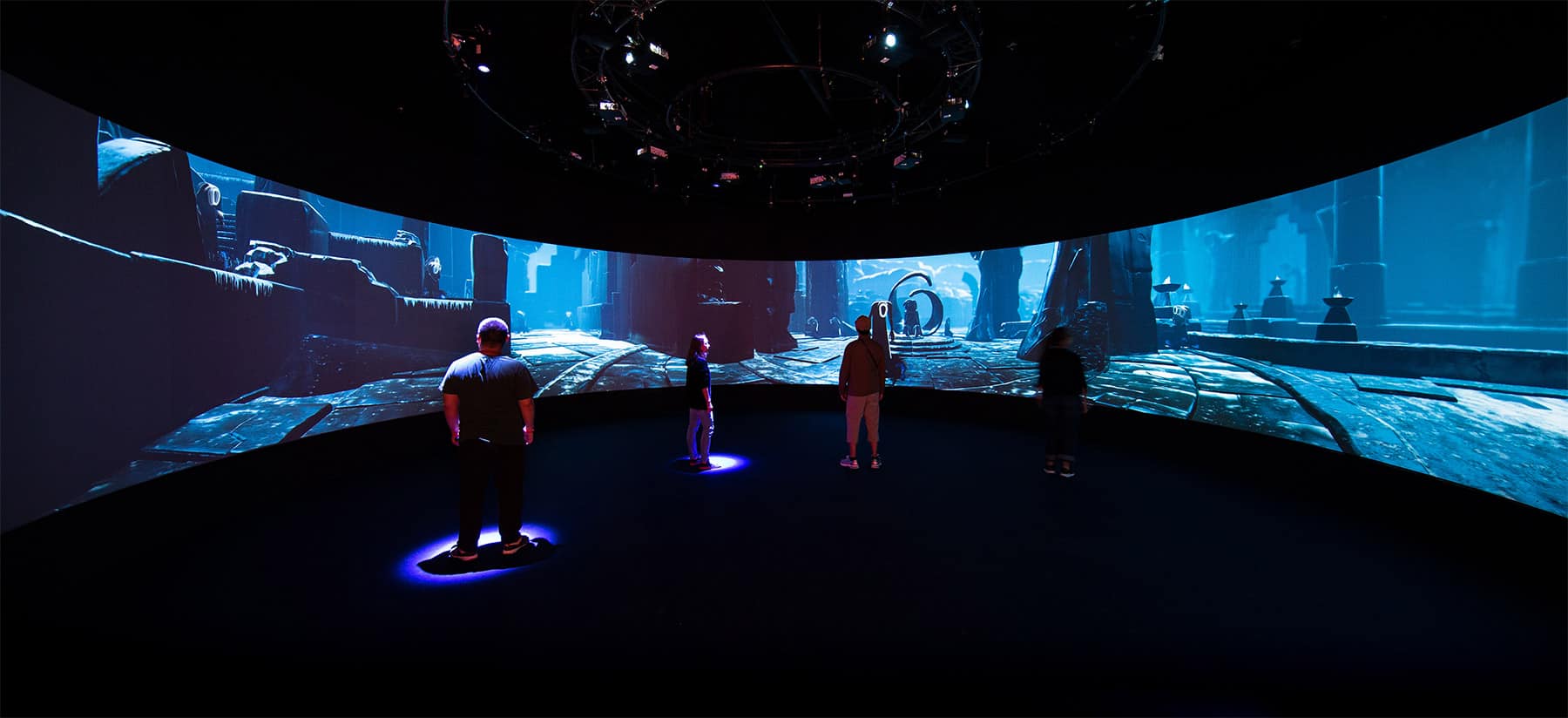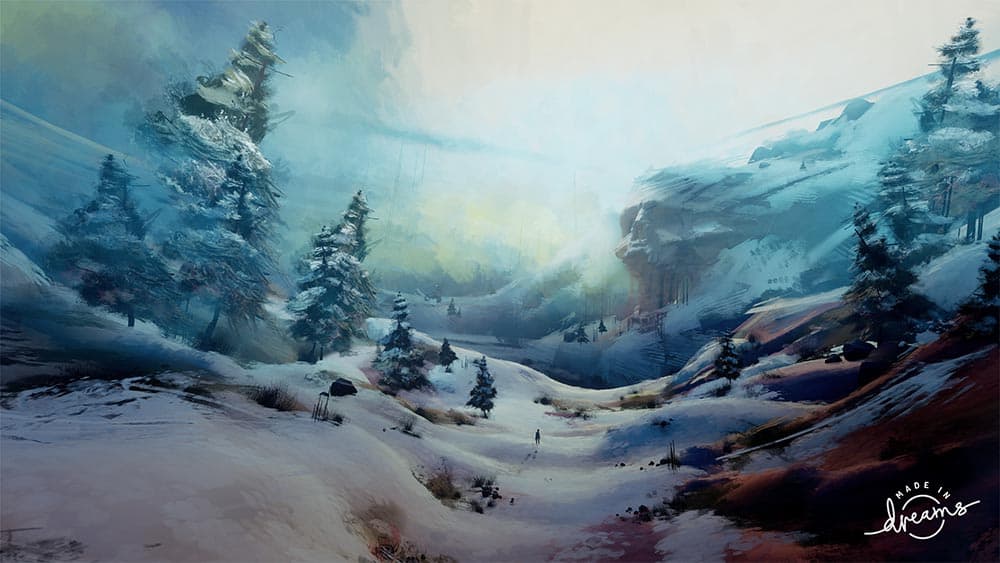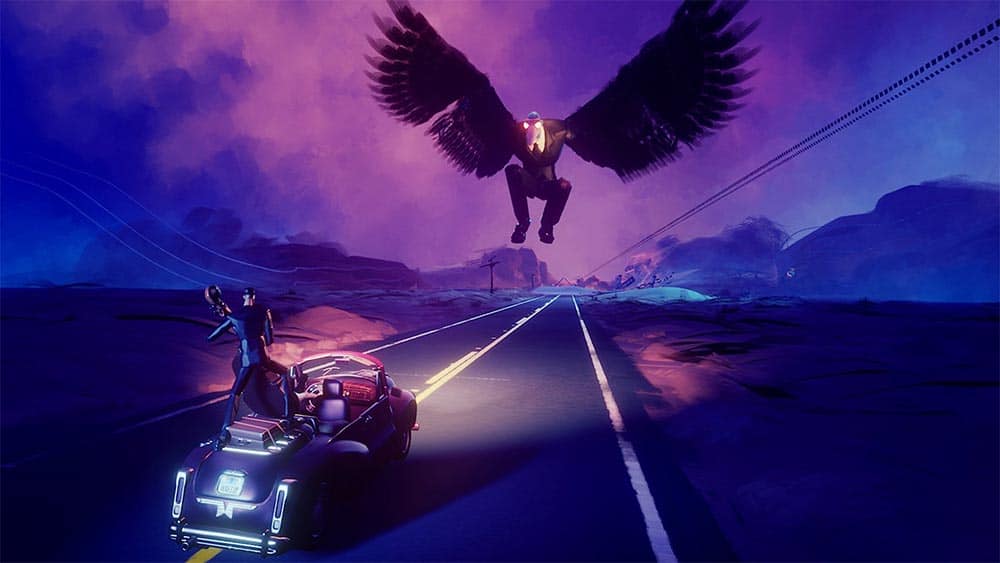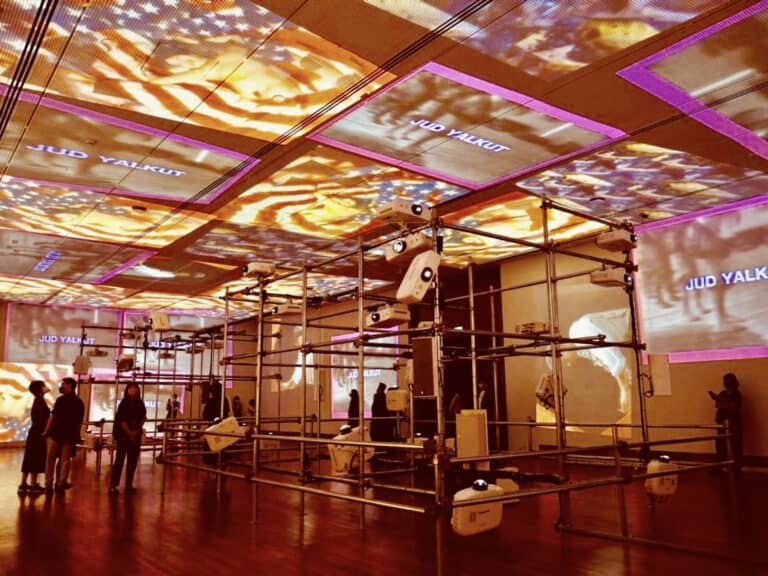Video games have always been an escapist pleasure for me, whether it’s embarking on an adventure with a new starter Pokemon or trying my hand at a gorgeous new independent release. Over the years, I realised what drew me to the medium paralleled my interests in visual arts and literature: the ability to immerse me in a brand new world and its stories. So imagine my joy at this opportunity to review Virtual Realms: Videogames Transformed at the ArtScience Museum: over a decade of gaming had paid off!
Bringing their specialist knowledge of gaming culture and the industry to Virtual Realms are co-curators Patrick Moran, who lead Game On, the Barbican’s first major international exhibition on the history of computer games, and celebrated game designer and ex-Sega developer Tetsuya Mizuguchi.
On view from 12 June 2021 to 9 January 2022, this exhibition breaks down the essential cores of video games into six themed ‘realms’: Synthesthesia, Unity, Connection, Play, Narrative, and Everything. Each one was created by famed games production companies — think Kojima Productions and thatgamecompany, who brought to being world-class games such as the Metal Gear series and Journey — and supported by companies that specialise in bringing art and tech together.
What impressed me was how distinct each experience was and how they, for the most part, elegantly embodied each game company’s signature interests and approaches to experience-making – all while utilising the new element of physical space and encouraging interaction within it.
Rezonance (2021) in SYNESTHESIA
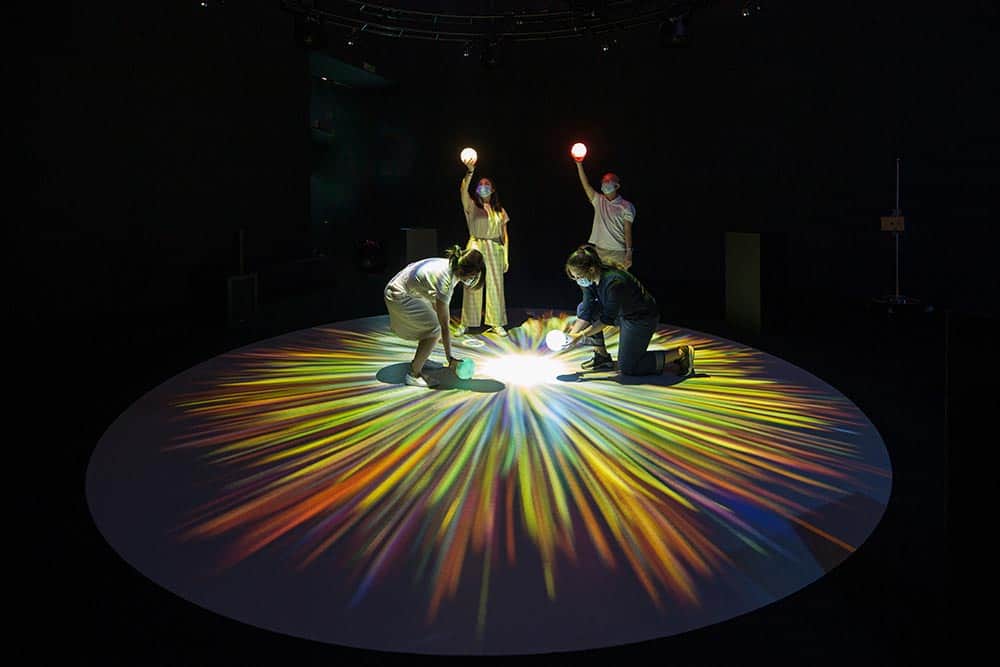
The first interactive experience, titled Rezonance, revolves around the phenomena of synesthesia, a neurological condition in which one’s brain processes information through several senses such that one ‘smells’ colours, or ‘tastes’ sounds, for instance. It builds on the company Enhance’s 2016 game Rez Infinite, which allows players to create music the more they played.
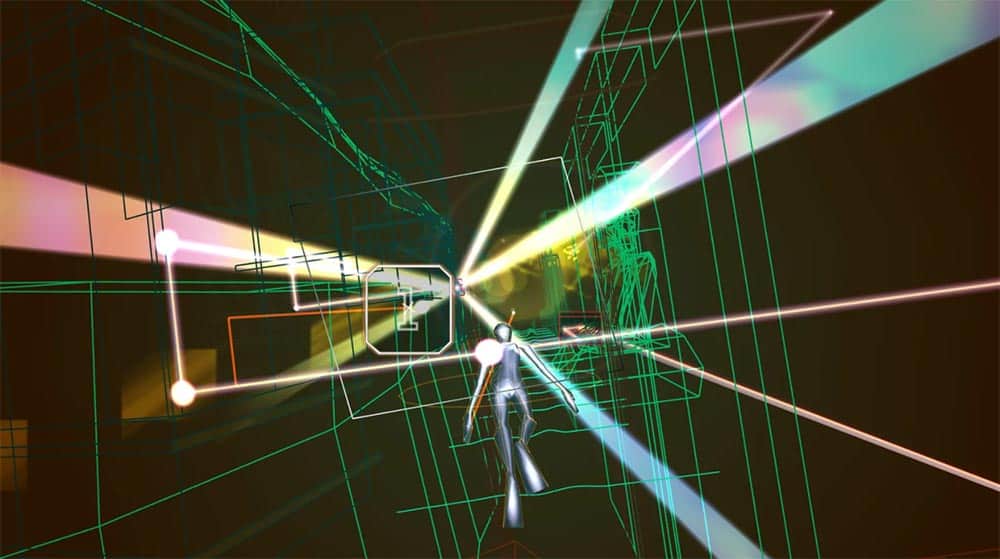
Building on this and the company’s ongoing research into the blurred lines between senses, Rezonance has you take control of a glowing interactive orb to sculpt light and shape sounds. Similar to a video game’s introductory sequence that familiarises players with mechanics, the initial few minutes teach you how your actions affect the space: raising or lowering the orb will emit high- or low-pitched sounds throughout the space. You can also wave the orb around to interact with light projections on the floor.
My plus-one and I had a whale of a time here, as activities like chasing down and striking light projections of dazzling birds with our orbs encouraged us to move freely. Another aspect of Rezonance I’d commend is how natural and comfortable the controls were. After all, controls are something that could make or break an interactive experience. Overall, I found Rezonance to be a multi-sensory delight that gracefully melds considerations of the physical, visual, and audio to engage audiences and hype them up for the rest of the showcase.
Together the distance between (us) (2021) in UNITY
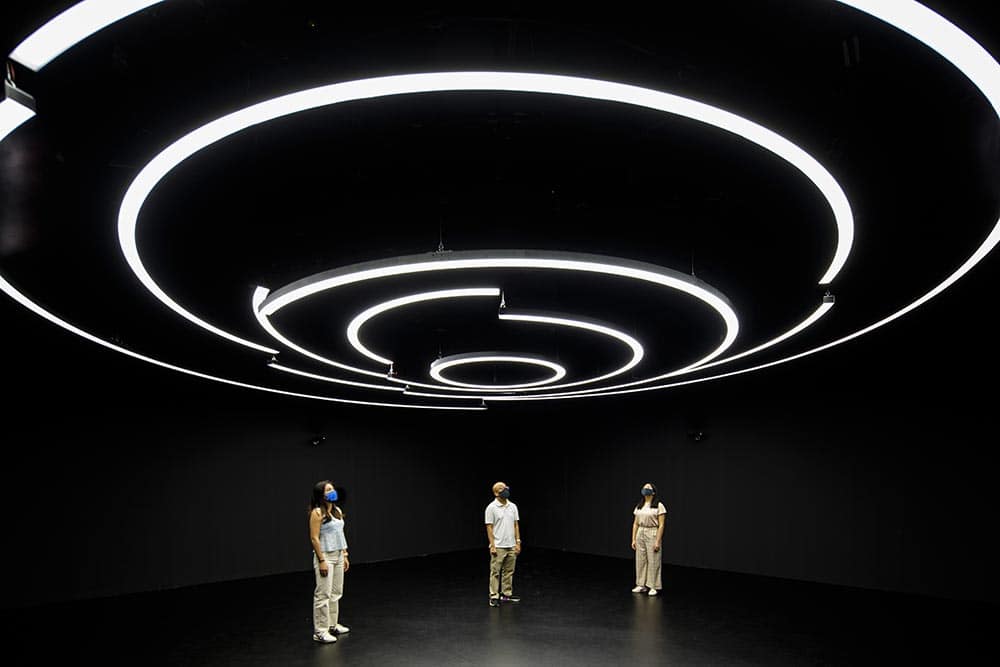
Created by thatgamecompany and experimental design firm FIELD.IO, the interactive light installation Together: the distance between (us) centres on the idea of unity. I found this joint exploration of human connection in line with thegamecompany’s ethos – one of its most celebrated video games, Journey, encourages online players to build relationships and help each other across levels — but without the use of text or speech.
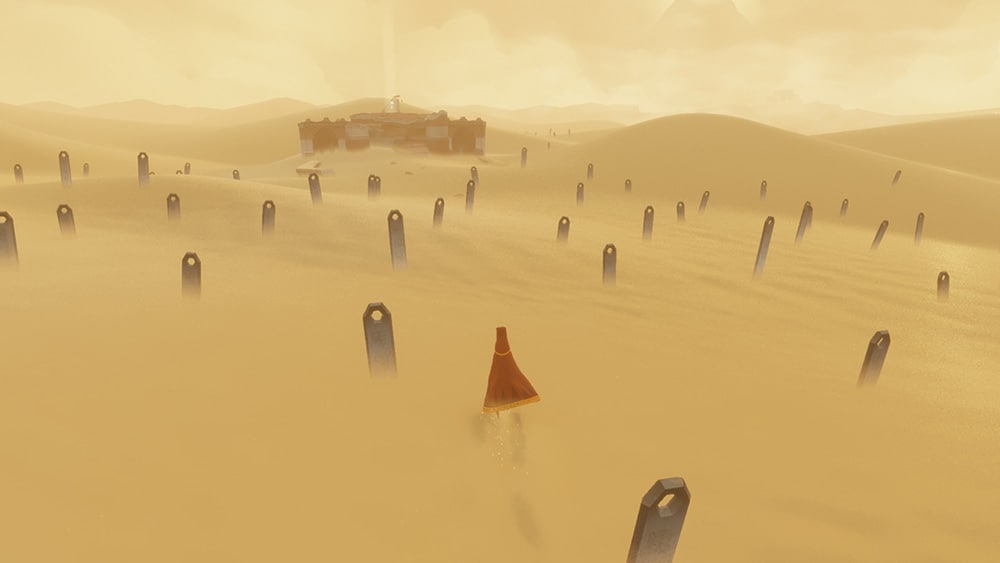
Some might also know Journey for its sublime music by Austin Wintory, which would respond dynamically to players’ actions. I was excited to see Together take cues from this, as the installation invited visitors to move and interact beneath rings of light hanging from the ceiling. Sound is the focus here, as each movement in the space would generate chiming sounds which get bolder when visitors stand close to each other.
My plus-one and I ended up generating a symphony of sound as we moved excitedly throughout the space; a symphony that grew in complexity as two children joined us and mirrored our actions. This was my personal favourite, as I felt that the installation succeeded in its pursuit of unity by fostering memorable connections between visitors that transcended typical spoken communication.
WALL (2021) in CONNECTION
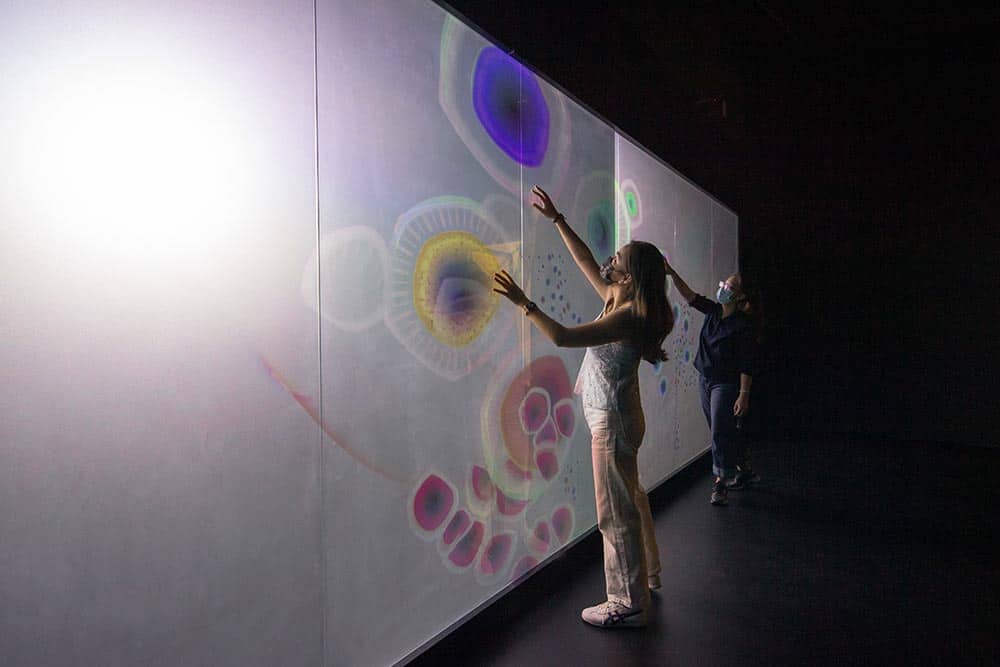
The third work WALL draws on biology (think cell walls and membranes) and the idea of barriers to invite visitors to consider the physical and social walls around them. Some might not be surprised to hear that Kojima Productions, with the help of The Mill, is behind this, as its founder Hideo Kojima is celebrated for his work on games like the Metal Gear series, which interrogated profound sociological, political, and scientific themes. His most recent title Death Stranding had players travel across wastelands to reconnect networks and bring resources to isolated communities, and this installation reflects this interest in human connection.
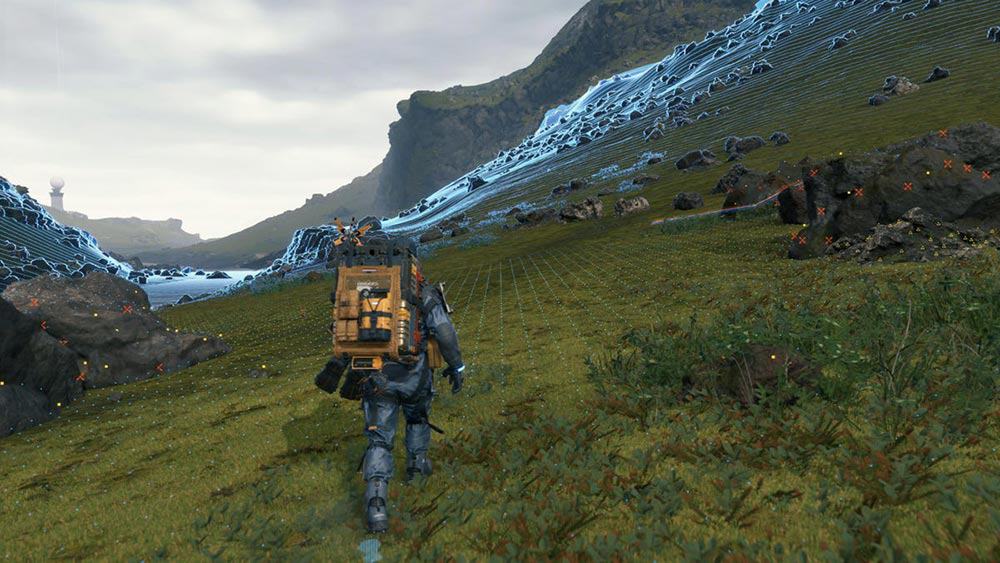
While seemingly complex, WALL remains accessible. It comprises, of course, a wall divided into back and front screens, with each of them bearing a slew of biological cells and galactic energy particles. Move your hand across the interactive surface to command trails of glowing flecks to follow you or make pinching motions to split neon cells into twos (or however many might please you, really).
What’s interesting is that the patterns of cells on the screen indicates the presence of people on the other side of the wall. While this relationship isn’t particularly explicit, I admire how this invites us to consider who’s on the other side of the screen and how our actions might impact them.
Dream Shaping (2021) in PLAY
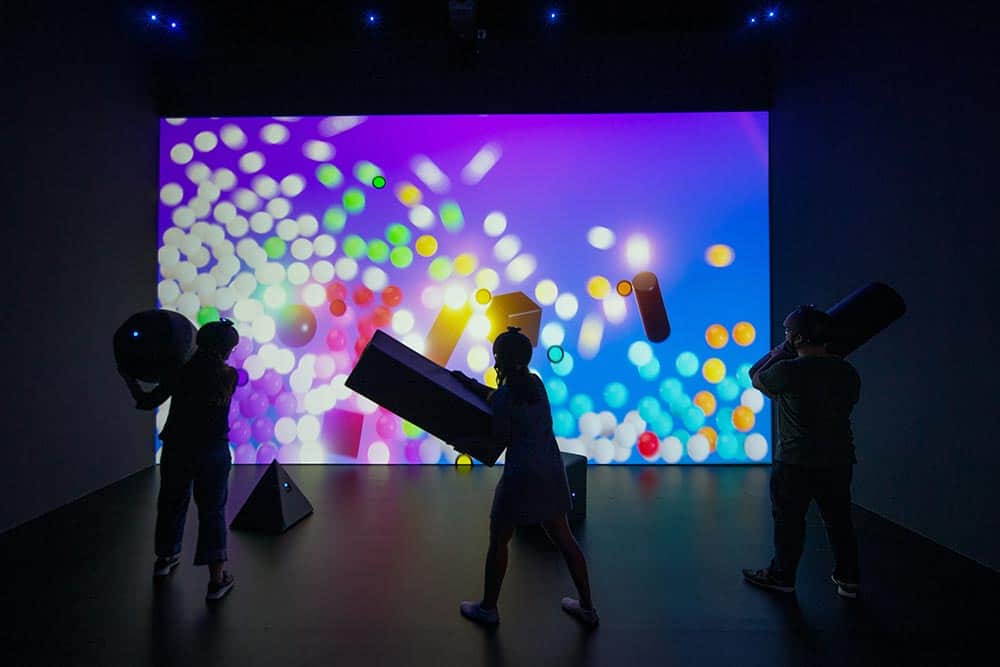
The next interactive activity, Dream Shaping, embodies what many would consider the essential core of video games: a sense of play. The interactivity would be familiar to anyone who ever owned a Nintendo Wii console (or snuck over to their friend’s houses to play with it). Pick up a large geometrically-shaped object to act as a controller; don a safety helmet; and go to town swinging your shape around to interact with virtual activities — think chasing down power-ups to induce an aesthetic transformation for your controller or swing it around to paint a ball-pit.
Media Molecule’s Dreams system forms the basis of the virtual world visitors will interact with: it’s an impressive digital toolset that encourages makers to build and share their creations, which could span anything from games, music or animation. While Dream Shaping was nonetheless fun and of course, unleashed my inner child, part of me wished the activities were centred more around boundless creativity, which is what Dreams is all about.
Book of Sand (2021) in NARRATIVE
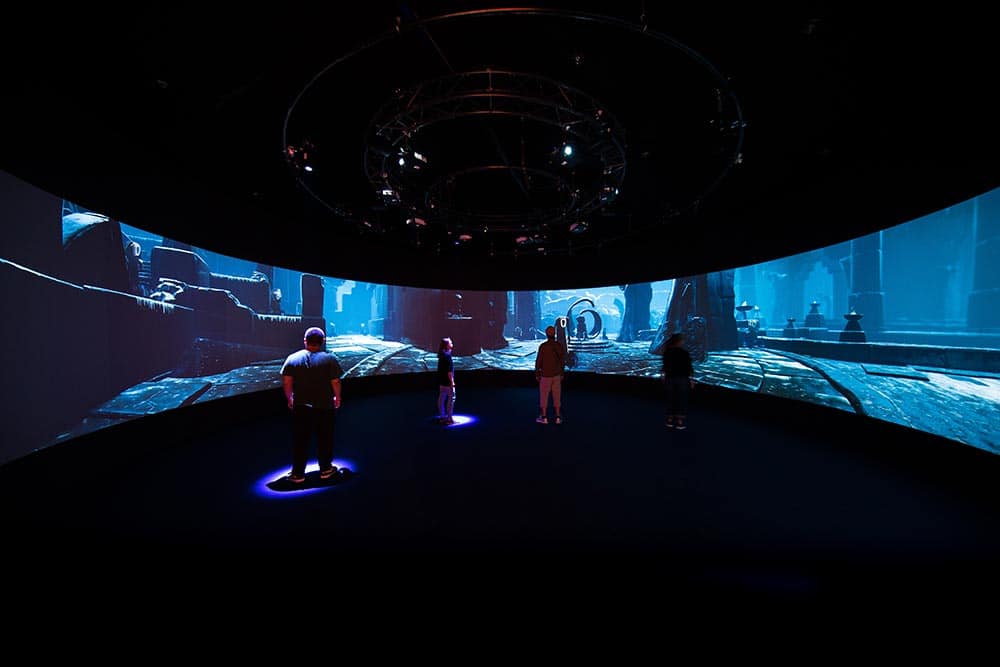
Foregrounding the narrative potential of video games is Book of Sand, created by Tequila Works and The Workers. Inspired by Jorge Luis Borges’s novella of the same name, Book of Sand expands on the atmospheric Mediterranean landscapes of Tequila Work’s 2017 game RiME to explore the notion of an infinite story with neither ‘beginning nor end.’
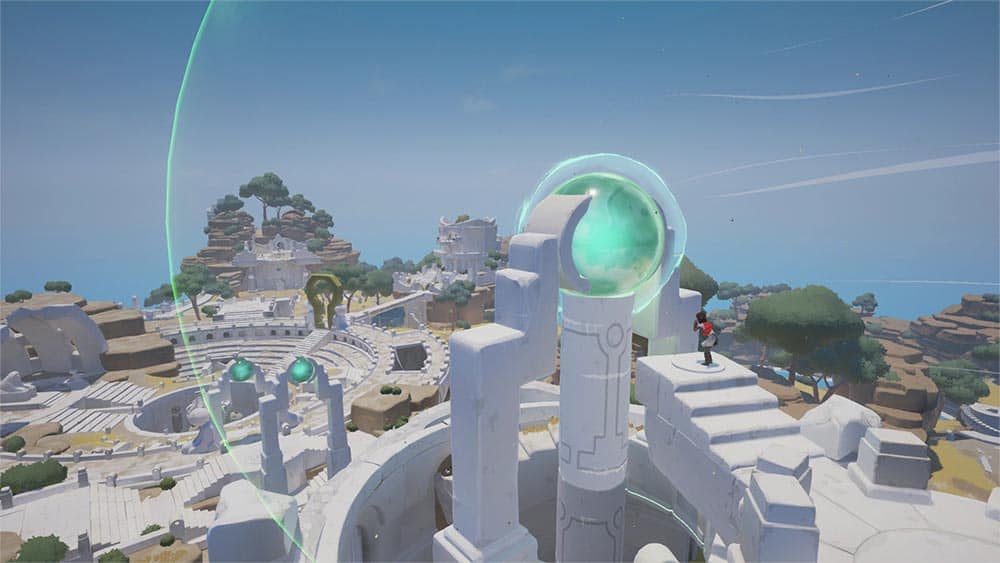
Moody landscapes surround you on curved screen walls and you’re meant to step into beams of light projected on the floor to interact with the landscape. The first environment I entered was a flooded, ghoul-filled sewer, and by stepping on the multiple beams of light, I stopped excess water from overflowing the space and revealed an exit way to the next area: a hauntingly beautiful rain-soaked temple.
What I appreciated was being able to jump into the landscape without having to know any contextual information; perhaps a purposeful expression of the lack of beginning or end. The slower pace was a pleasant change from the high energy of Dream Shaping and paved the way for the last interactive artwork: Eye.
Eye (2021) in EVERYTHING
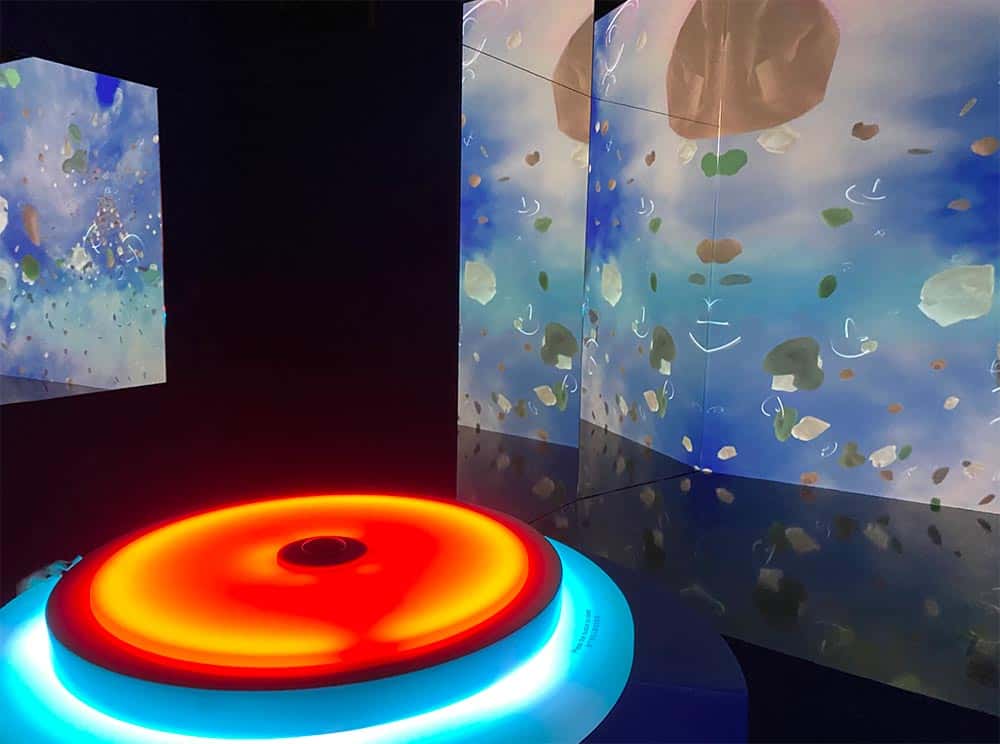
Eye embodies the very abstract notion of everything — literally the entirety of space and mankind — to convey the infinite potential of video games. It’s a surreal piece with kaleidoscopic formations on screen, which visitors can ‘flow’, ‘scale’ or ‘warp’ using the three controllers in the room. Gracing the screen are dizzying emblems of life from various civilisations, such as ancient anthropoids, odd-looking fungi, lush flora, golden retrievers, and suburban houses.
A synchronised soundtrack by the London Symphony Orchestra plays in the background, its resonant sounds paralleling a majestic world coming into being. I recommend taking the time to sit down on the plush couches and soak it all in meditatively.
Co-creator David O’Reilly’s Mountain subverts the traditional, action-filled stereotype of video games by having players idly watch a mountain, so it’s no surprise Eye isn’t a traditional action-packed experience. Overall, I found Eye to be a satisfying end to a thought-provoking show and appreciated how it hinted at video games’ potential as an immersive art form.
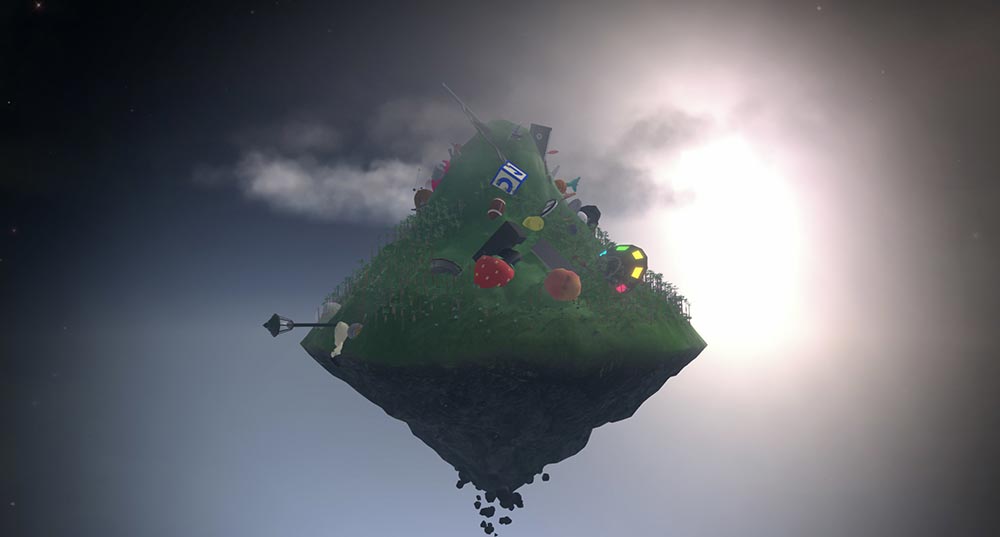
Leaving Virtual Realms for the real world again left my head spinning with thoughts of what it meant for the future of video games and contemporary art. While this certainly isn’t the first time that video games have been venerated in institutions (exhibitions such as the V&A’s Videogames: Design/Play/Disrupt and the Barbican’s Game On come to mind), Virtual Realms highlighted to me how similar they are to contemporary art as both mediums work to convey ideas and experiences, as their success is centred on choosing the right experiential tools — primarily mediums and player mechanics respectively — to express them.
But beyond that, the exhibition brings me a simple, personal joy. More than anything, I’m happy that video games are presented as enriching, artistic endeavours (rather than the violent medium critics tend to label it as) that can transport us to new and inspiring environments in a time when we need them the most.
______________________________
Virtual Realms: Videogames Transformed is on view at Artscience Museum until 9 Jan 2022. For more information, check out their website.
